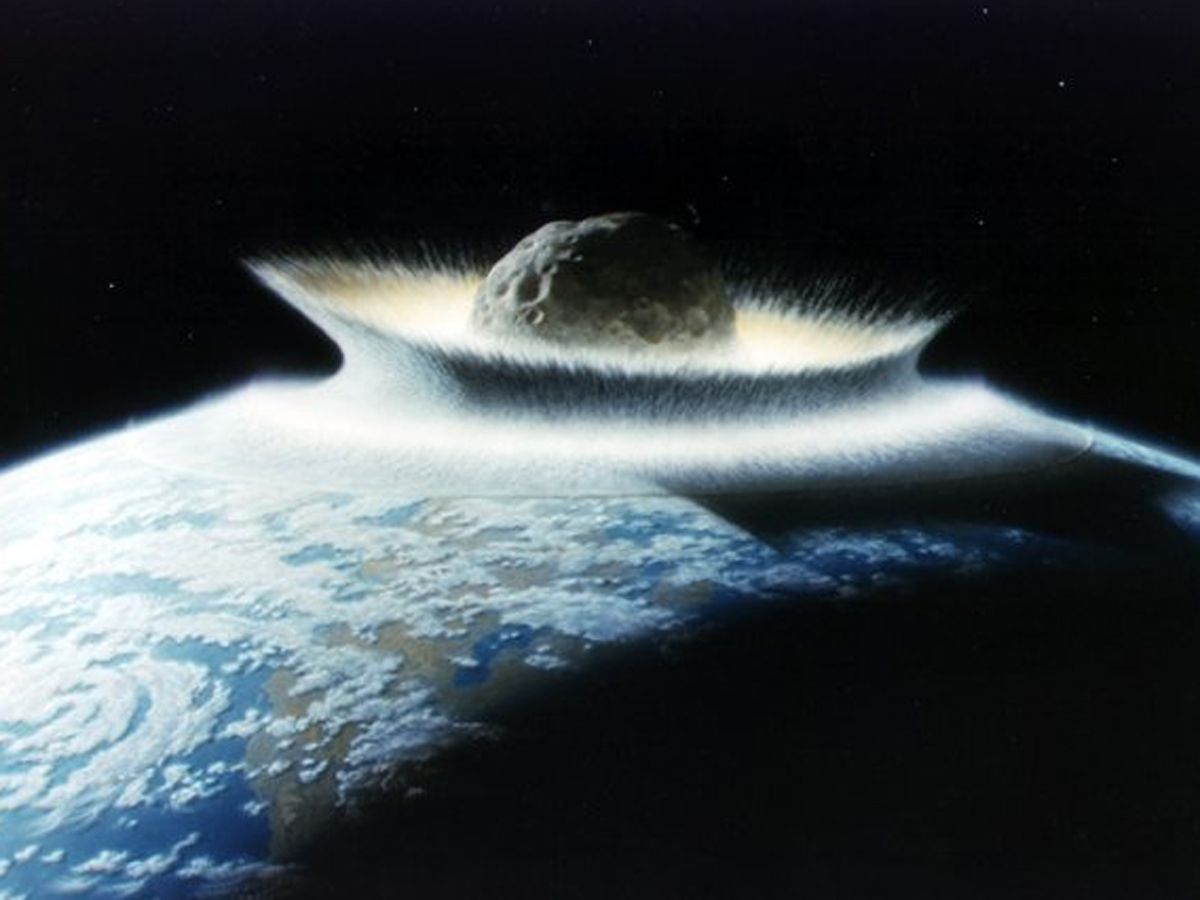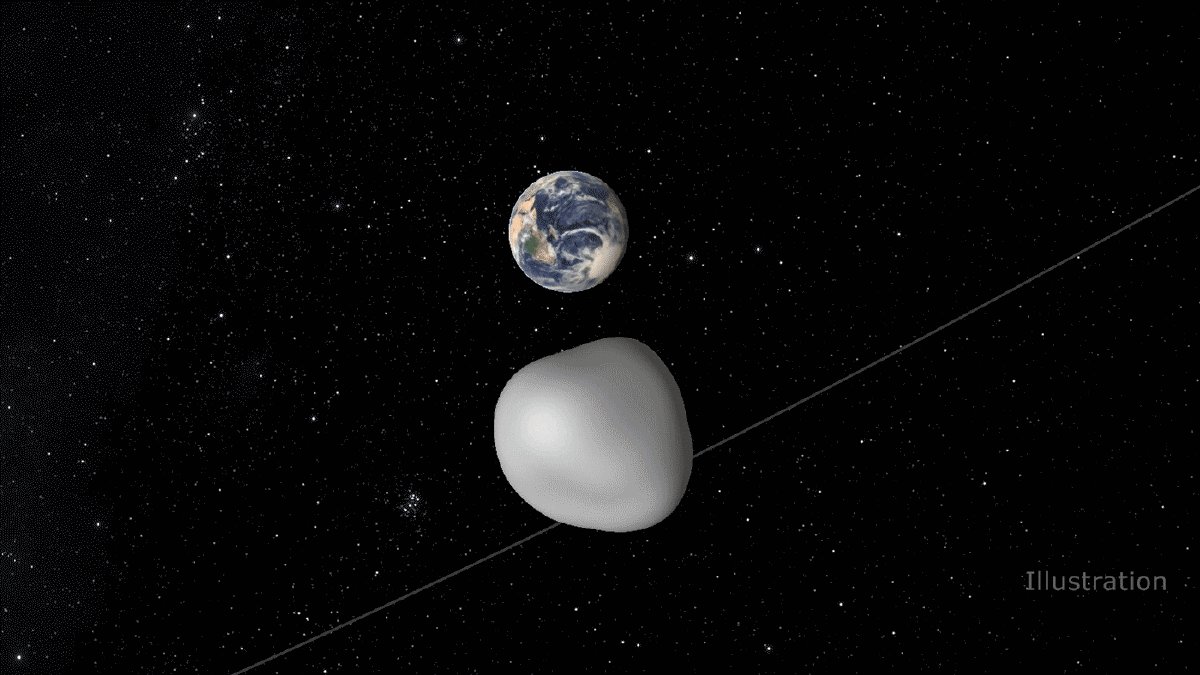
NASA is preparing to test out its planetary defense systems on an asteroid that will come extremely close to Earth next week.
Asteroid TC4 will pass us by on October 12 at an estimated distance of 31,000 miles—that's an eighth of the distance between our planet and the moon, so just a whisker in astronomical terms. About 50 feet wide, the asteroid poses absolutely no threat to Earth. But it presents NASA with an opportunity to practice for a real-life impact event.
Paul Chodas, manager of the Center for Near-Earth Object Studies (CNEOS) at NASA's Jet Propulsion Laboratory, tells Newsweek what the space agency and other organizations around the globe are doing to perform this exercise—and how they plan to protect Earth from asteroids in the future.
What makes TC4 a good candidate for a planetary defense exercise?
We knew it was coming and we knew it would be approaching very close. That's the reason we decided a year ago to use this as an exercise for the observing community—the whole process of what we would do if an asteroid were on a collision course with Earth.
Asteroids pass by Earth almost daily. But most of them are very small. Sometimes we have big ones but they don't pass this close. It's fairly rare to find an asteroid coming this close five years ahead of time. We knew it was coming so we could prepare our exercise months ahead. We didn't know exactly how close, but knew it was likely to be within one lunar distance. It was a perfect example.
How is NASA preparing for the flyby?

Our primary assignment is to track the orbit of the asteroid. We've being doing that since early August when the first detection was made. Once TC4 was recovered we could refine its orbit fairly precisely and we're continuing to refine it daily. [It will come] about 50,100 kilometers [31,000 miles] from the center of the Earth. Our accuracy is down to plus or minus 15 kilometers [nine miles], so very accurate. It's less than four Earth diameters away from the surface—that's very close.
A network of astronomers will be tracking TC4. You want to know early on the composition and the size. We have a rough idea of its size from its brightness in optical wavelengths but we have to make an assumption on its reflectivity. Dark asteroids are known to have low densities, and bright asteroids are known to have rockier, higher densities.
We would measure all this if an asteroid were headed toward Earth because we would want to know the size; we would want to know the mass especially. That would tell us the energy that would be deposited when the asteroid entered the atmosphere.
What would happen if a small asteroid like TC4 was actually going to hit Earth?
We at the CNEOS work on the trajectory and we'd be able to tell where the asteroid was going to hit. There would be uncertainty on that so we would develop a risk corridor—a line where the asteroid's orbit slices through Earth. We know it's on the orbit, but we don't know exactly where [it would hit].
We have run several exercises where we simulated an asteroid hitting Earth. We try to predict where it will hit, which improves as we take more and more observations. It's a question of refining the position from a corridor down to a footprint of maybe 1,000 kilometers [620 miles], then maybe a few hundred miles. For TC4, we have just tens of miles of uncertainty and we're still more than a week away.
This is exactly what we would do if there were a real case. I would add that this is being used as an exercise for an asteroid impact up through government as well. So NASA headquarters is communicating upwards to the U.S. Government.
What about if the asteroid was much bigger?
Bear in mind we're more likely to be hit by a small asteroid than a large one. We have all these movies where you have dramatic scenes of asteroids impacting Earth, but there are far more small ones than large ones, so it's much more likely we would have a small one coming our way.
Now, clearly a 15-meter [49-foot] asteroid isn't even large enough to reach the ground. But a 30-meter [100-foot] might, 60-meter [200-foot] might, or at least a significant fraction of it. When I say reach the ground, I mean in one piece. All the dust and debris reach the ground but the atmosphere disintegrates them for us, leaving us a shower of rocks.
As you can imagine, the observing techniques are very similar for asteroids of different sizes. The communications set-up would be the same if this was a real impact scenario. This is all good for practice.
What would we do if an asteroid were so big that we needed to find a way to deflect it away from Earth?
If we had years of warning time before a possible impact, then we could coordinate with space agencies to try to divert the asteroid. You need to have a warning time of many years to be successful at diverting an asteroid. It also depends on the size. In our exercises, we have worked with five to 10 years of warning time, which is sufficient to deflect an asteroid away.
There are several ways to deflect an asteroid. The simplest way is to run into it with a fairly massive spacecraft. Running into it at a high velocity would transfer the momentum from the spacecraft to the asteroid and that would change the asteroid's velocity slightly. That would be sufficient to make an asteroid miss Earth if it was done several years, say three to five years, before its potential impact.
Another is what we call a gravity tractor, which is for a more massive asteroid. This would involve picking up another rock and hovering it over the asteroid. Mutual gravitational attraction over a year or two might be enough to change the velocity.
Finally you could fire an ion beam at the asteroid. You would have to fire ions at high velocity…but that should be able to move an asteroid.
These are the techniques that seem promising.
What will happen to TC4 after its flyby, and how is NASA looking out for other close-approach asteroids?
It is coming so close to the Earth once, and you ask could...it come close again? For a while the answer was yes—there was a chance it could have even impacted Earth in the year 2050. But as we improve, we now see that orbit is no longer in the range of possibility. On our website, we list all the possible potential impacts of all asteroids whenever we find one. These are all really unlikely—one in a million or less.
We continue the search for asteroids at NASA. We've found more than 95 percent of the 1-kilometer [0.6-miles] or larger asteroids that could truly be very hazardous to civilization. We already know where they are. We monitor their future paths and none of them have any chance of impacting.
But there's this middle ground area of asteroids measuring several hundred meters. We continue to search for as many of these as we can. We're anywhere from a third to halfway through finding all of those. There's more work to be done on the smaller ones. But this one, at 15 meters, is no threat at all.
Uncommon Knowledge
Newsweek is committed to challenging conventional wisdom and finding connections in the search for common ground.
Newsweek is committed to challenging conventional wisdom and finding connections in the search for common ground.
About the writer
Hannah Osborne is Nesweek's Science Editor, based in London, UK. Hannah joined Newsweek in 2017 from IBTimes UK. She is ... Read more
To read how Newsweek uses AI as a newsroom tool, Click here.








